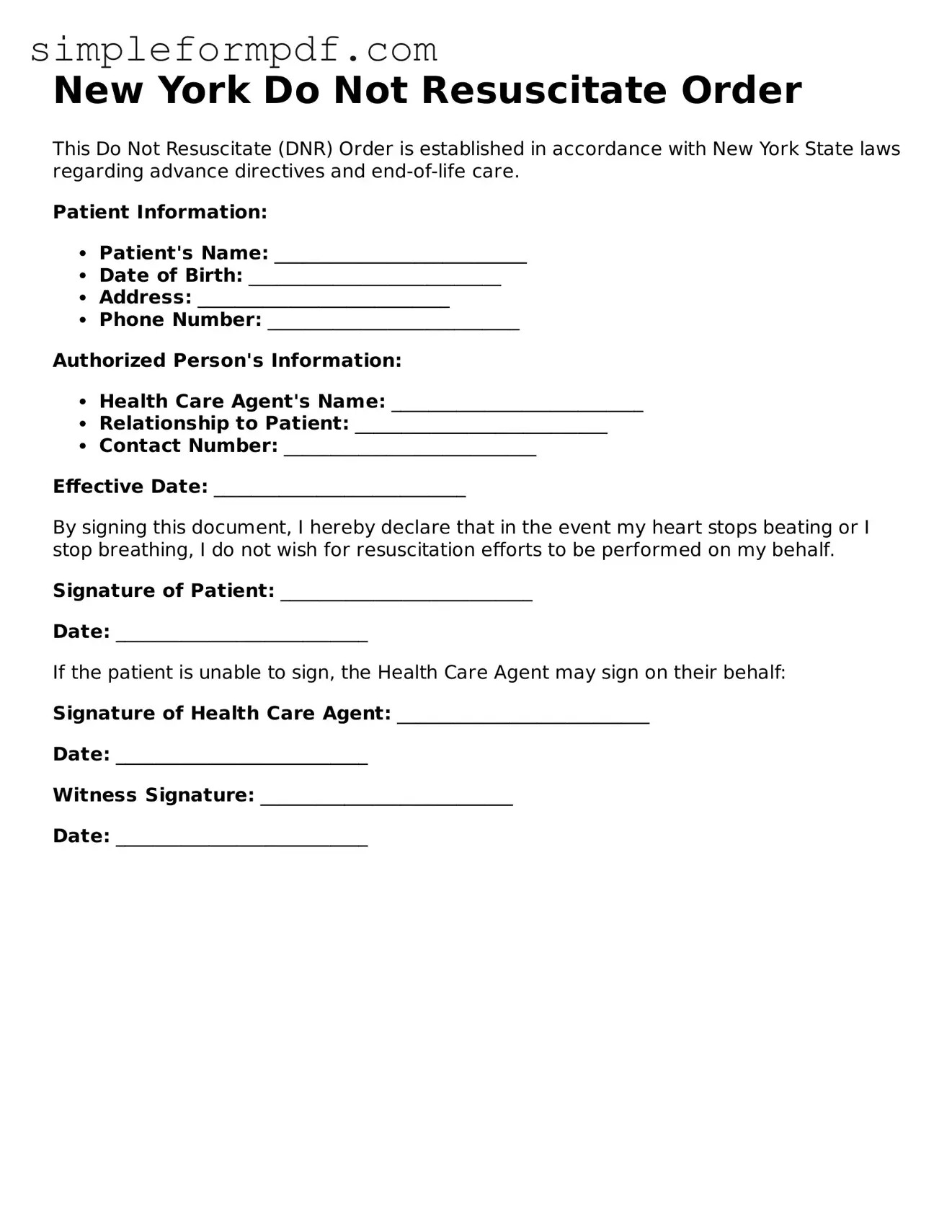New York Do Not Resuscitate Order
This Do Not Resuscitate (DNR) Order is established in accordance with New York State laws regarding advance directives and end-of-life care.
Patient Information:
- Patient's Name: ___________________________
- Date of Birth: ___________________________
- Address: ___________________________
- Phone Number: ___________________________
Authorized Person's Information:
- Health Care Agent's Name: ___________________________
- Relationship to Patient: ___________________________
- Contact Number: ___________________________
Effective Date: ___________________________
By signing this document, I hereby declare that in the event my heart stops beating or I stop breathing, I do not wish for resuscitation efforts to be performed on my behalf.
Signature of Patient: ___________________________
Date: ___________________________
If the patient is unable to sign, the Health Care Agent may sign on their behalf:
Signature of Health Care Agent: ___________________________
Date: ___________________________
Witness Signature: ___________________________
Date: ___________________________
